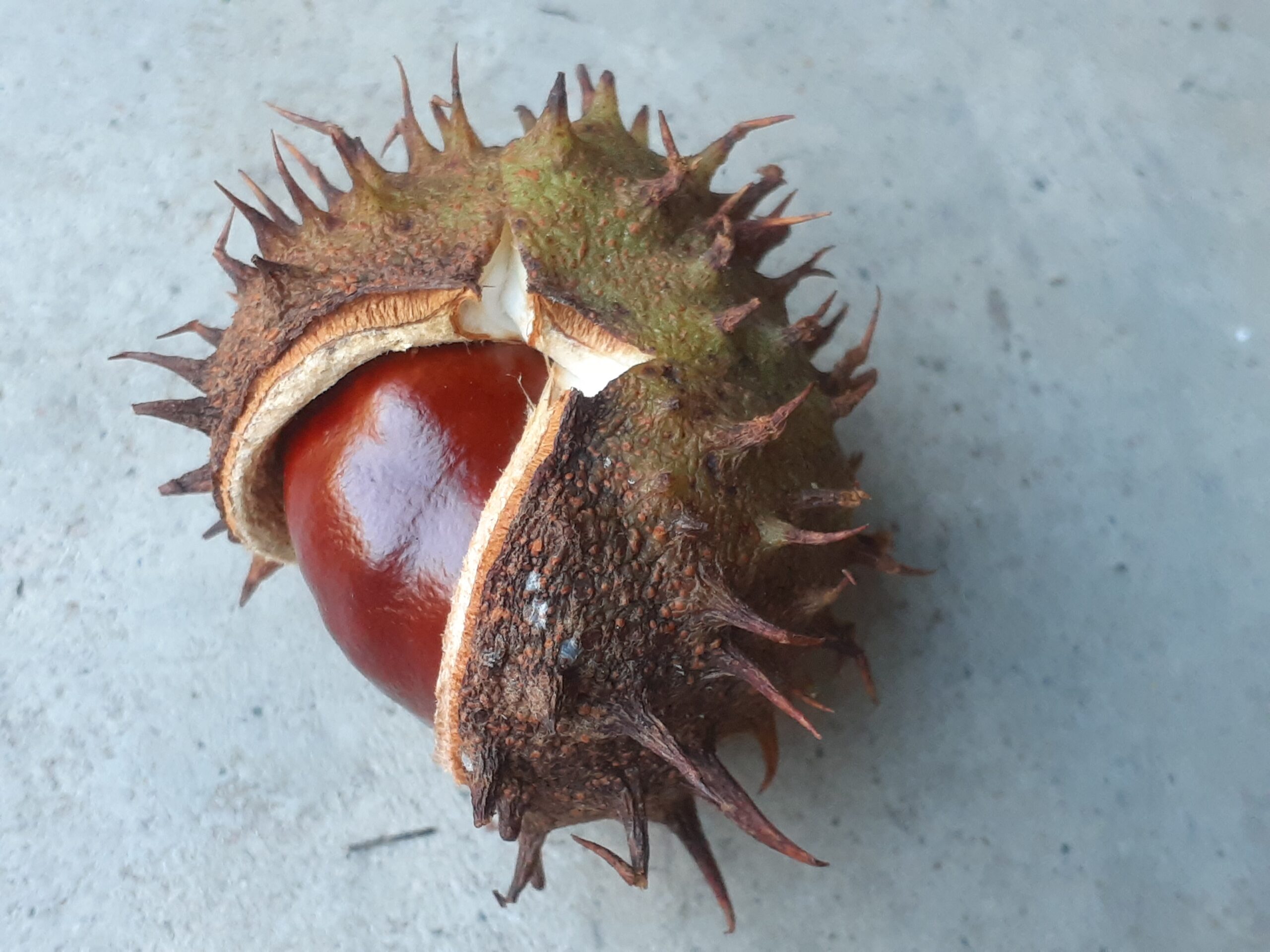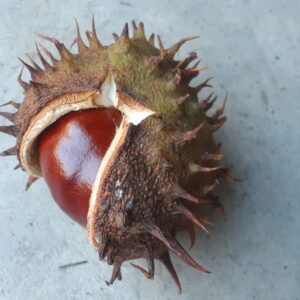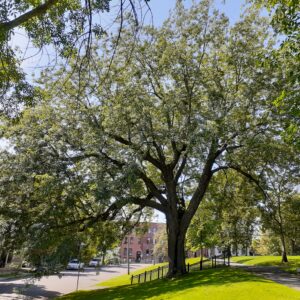Horsechestnut
Aesculus Hippocastanum
A large, wide spreading, shade tree native to Europe but planted extensively in New Brunswick. Exceptional flower display in late spring with erect, white flower clusters gracing the branches before giving way to prickly fruits containing large, shiny, brown seeds that ripen in the fall; a favourite of children in some cultures. Insect pollinated flowers contain both male and female parts and provide a source of nectar for bees and hummingbirds. Not to be mistaken for Chestnut (castanea) trees whose seeds are edible – Horsechestnut seeds are inedible and toxic to humans. Susceptible to leaf scorch if soil is too dry. Tricky to transplant due to a strong taproot.
Additional information
| Foliage | Deciduous |
|---|---|
| Locale | Native to Europe |
| Height | Large (60-100ft) |
| Width | Wide |
| Form | Oval, Round |
| Growth Rate | Moderate |
| Longevity | Long (over 100 years) |
| Hardiness Zones * | 3, 4, 5 |
| Sun Exposure | Full Sun (over 6 hrs), Partial Sun (4 to 6 hrs) |
| Soil Preferences * | Moist, Slightly Acidic, Well Draining |
| Soil Tolerances | Clay, Slightly Alkaline |
| Other Tolerances | Road Salt, Urban Pollution |
| Ornamental Interest | Buds, Flowers (attractive), Leaves (shape), Seeds |
| Wildlife Value | Bees (flowers), Hummingbirds (flowers), Insect Pollinators (flowers), Small Mammals (fruits/seeds) |
| Human Value | Carpentry (wood) |
| Seed Collection | Personally in NB |
| Planting Considerations | Casts Deep Shade, Messy Leaf Litter, Messy Seed Litter, Tricky to Transplant |



























